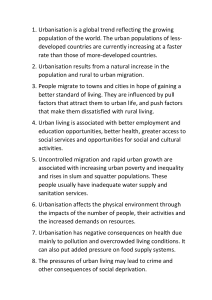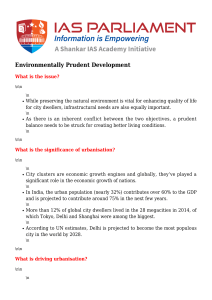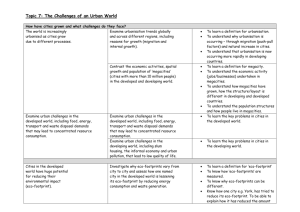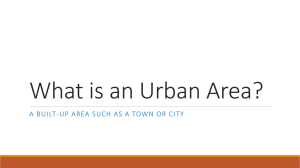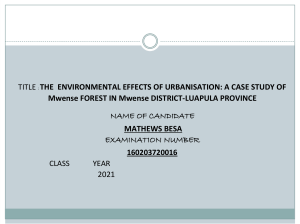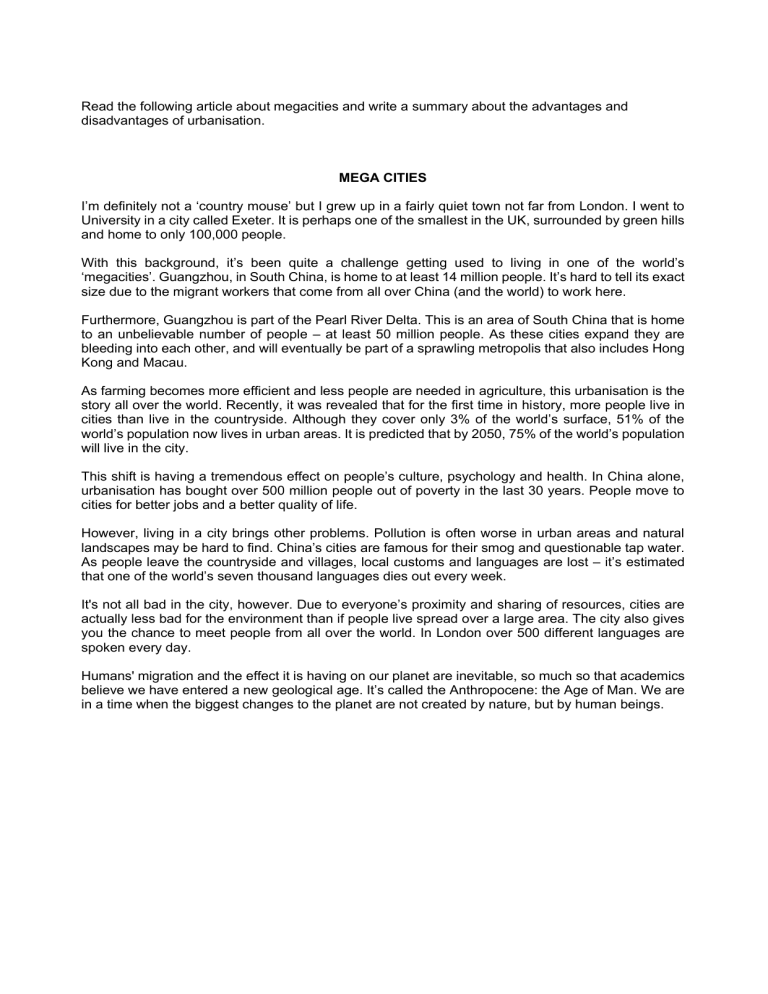
Read the following article about megacities and write a summary about the advantages and disadvantages of urbanisation. MEGA CITIES I’m definitely not a ‘country mouse’ but I grew up in a fairly quiet town not far from London. I went to University in a city called Exeter. It is perhaps one of the smallest in the UK, surrounded by green hills and home to only 100,000 people. With this background, it’s been quite a challenge getting used to living in one of the world’s ‘megacities’. Guangzhou, in South China, is home to at least 14 million people. It’s hard to tell its exact size due to the migrant workers that come from all over China (and the world) to work here. Furthermore, Guangzhou is part of the Pearl River Delta. This is an area of South China that is home to an unbelievable number of people – at least 50 million people. As these cities expand they are bleeding into each other, and will eventually be part of a sprawling metropolis that also includes Hong Kong and Macau. As farming becomes more efficient and less people are needed in agriculture, this urbanisation is the story all over the world. Recently, it was revealed that for the first time in history, more people live in cities than live in the countryside. Although they cover only 3% of the world’s surface, 51% of the world’s population now lives in urban areas. It is predicted that by 2050, 75% of the world’s population will live in the city. This shift is having a tremendous effect on people’s culture, psychology and health. In China alone, urbanisation has bought over 500 million people out of poverty in the last 30 years. People move to cities for better jobs and a better quality of life. However, living in a city brings other problems. Pollution is often worse in urban areas and natural landscapes may be hard to find. China’s cities are famous for their smog and questionable tap water. As people leave the countryside and villages, local customs and languages are lost – it’s estimated that one of the world’s seven thousand languages dies out every week. It's not all bad in the city, however. Due to everyone’s proximity and sharing of resources, cities are actually less bad for the environment than if people live spread over a large area. The city also gives you the chance to meet people from all over the world. In London over 500 different languages are spoken every day. Humans' migration and the effect it is having on our planet are inevitable, so much so that academics believe we have entered a new geological age. It’s called the Anthropocene: the Age of Man. We are in a time when the biggest changes to the planet are not created by nature, but by human beings. Content points Advantages: 1. brings people out of poverty 2. better jobs 3. better quality of life 4. chance to meet people from all over the world 5. proximity 6. sharing of resources 7. less bad for the environment Disadvantages 8. pollution / smog 9. hard to find natural landscapes 10. languages / cultures lost A Star Model Answer One of the advantages urbanisation brings is the improved quality of living standard for the city dwellers. The prospect of better employment opportunities is also a reason why people prefer megacities, and this has proved to alleviate poverty. Moreover, urban areas are known to be better for the environment than rural areas owing to the concept of resource sharing in close proximity of the city. Despite the strong evidence proving the popularity of urbanisation, not only does this modern idea escalate pollution problem but it has also made finding natural landscapes in cities increasingly difficult. Last but not the least, more languages and cultures are fading away with the rapid flow of rural populations into urban areas. [117 words] © eslmojo.com

